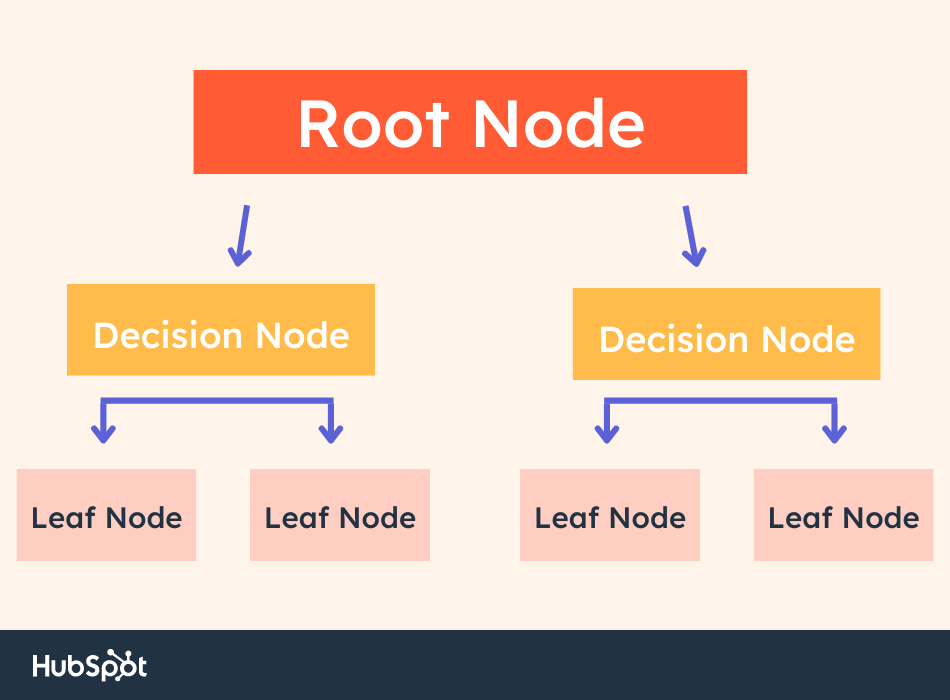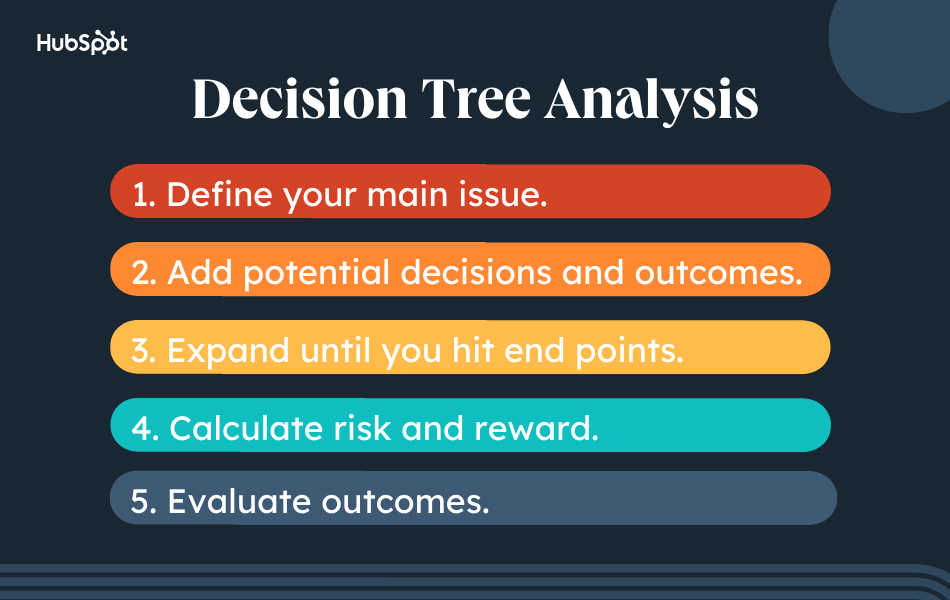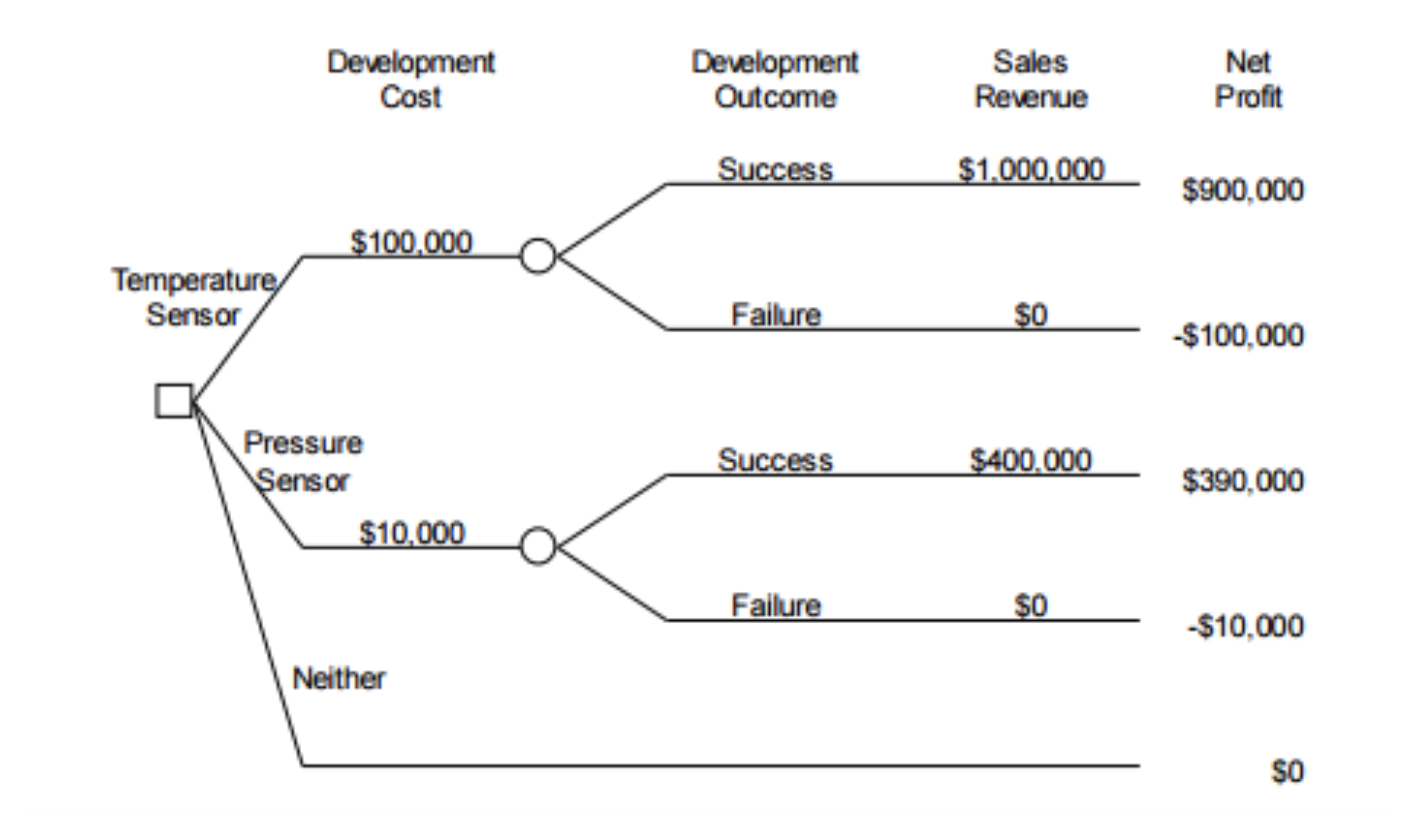
Have you ever ever made a high-stakes choice? If sure, did you ponder for a while earlier than touchdown on the “proper” choice — and even then, nonetheless felt uncertain about the perfect plan of action?
In instances like these, you would possibly want a call tree. It is extra formal than a chat with a good friend or a pros-and-cons checklist.

Right here, we’ll present you find out how to create a call tree and analyze danger versus reward. We’ll additionally have a look at a couple of examples so you possibly can see how different entrepreneurs have used choice timber to grow to be higher choice makers.
Desk of Contents
What’s a call tree?
Determination Tree Evaluation
Create a Determination Tree
Create a Determination Tree in Excel
Determination Tree Examples
What’s a call tree?
A choice tree is a flowchart that begins with one important thought — or query — and branches out with potential outcomes of every choice. By utilizing a call tree, you possibly can determine the very best plan of action.
With regards to advertising and marketing, decision-making can really feel notably dangerous. What’s my colleague is so hooked up to a brand new product, she doesn’t need to point out any of its shortcomings? What if my advertising and marketing group doesn’t thoughts workplace progress, however they haven’t thought of the way it will have an effect on our technique long-term?
The visible component of a call tree helps you embrace extra potential actions and outcomes than you would possibly’ve if you happen to simply talked about it, mitigating dangers of unexpected penalties.
Plus, the diagram means that you can embrace smaller particulars and create a step-by-step plan, so when you select your path, it’s already laid out so that you can comply with.
 A choice tree incorporates 4 parts: the basis node, choice nodes, leaf nodes, and branches that join them collectively.
A choice tree incorporates 4 parts: the basis node, choice nodes, leaf nodes, and branches that join them collectively.
- The foundation node is the place the tree begins. It is the large situation or choice you might be addressing.
- Because the title suggests, the choice nodes signify a call in your tree. They’re potential avenues to “clear up” your important downside.
- The lead nodes signify potential outcomes of a call. For example, if you happen to’re deciding the place to eat for lunch, a possible choice node is eat a hamburger at McDonald’s. A corresponding leaf node could possibly be: Get monetary savings by spending lower than $5.
- Branches are the arrows that join every component in a call tree. Observe the branches to know the dangers and rewards of every choice.
Now let’s discover find out how to learn and analyze the selections within the tree.
Determination Tree Evaluation [Example]
Let’s say you’re deciding the place to promote your new marketing campaign:
- On Fb, utilizing paid advertisements, or
- On Instagram, utilizing influencer sponsorships.
For the sake of simplicity, we’ll assume each choices attraction to your superb demographic and make sense in your model.
Right here’s a preliminary choice tree you’d draw in your promoting marketing campaign:

As you possibly can see, you need to put your final goal on the prime — on this case, Promoting Marketing campaign is the choice you have to make.
Subsequent, you’ll want to attract arrows (your branches) to every potential motion you can take (your leaves).
For our instance, you solely have two preliminary actions to take: Fb Paid Advertisements, or Instagram Sponsorships. Nevertheless, your tree would possibly embrace a number of different choices relying on the target.
Now, you’ll need to draw branches and leaves to check prices. If this had been the ultimate step, the choice can be apparent: Instagram prices $10 much less, so that you’d seemingly select that.
Nevertheless, that is not the ultimate step. You have to determine the percentages for fulfillment versus failure. Relying on the complexity of your goal, you would possibly study present knowledge within the trade or from prior tasks at your organization, your group’s capabilities, funds, time-requirements, and predicted outcomes. You may additionally contemplate exterior circumstances that would have an effect on success.
Evaluating Threat Versus Reward
Within the Promoting Marketing campaign instance, there’s a 50% probability of success or failure for each Fb and Instagram. Should you succeed with Fb, your ROI is round $1,000. Should you fail, you danger shedding $200.
Instagram, however, has an ROI of $900. Should you fail, you danger shedding $50.
To judge danger versus reward, you have to discover out Anticipated Worth for each avenues. Right here’s the way you’d determine your Anticipated Worth:
- Take your predicted success (50%) and multiply it by the potential sum of money earned ($1000 for Fb). That’s 500.
- Then, take your predicted probability of failure (50%) and multiply it by the sum of money misplaced (-$200 for Fb). That’s -100.
- Add these two numbers collectively. Utilizing this formulation, you’ll see Fb’s Anticipated Worth is 400, whereas Instagram’s Anticipated Worth is 425.

With this predictive data, you must have the ability to make a greater, extra assured choice — on this case, it seems like Instagram is a greater possibility. Regardless that Fb has the next ROI, Instagram has the next Anticipated Worth, and also you danger shedding much less cash.
Create a Determination Tree
You possibly can create a call tree utilizing the next steps. Bear in mind: once you full your tree, you possibly can start analyzing every choice to seek out the perfect plan of action.

1. Outline your important thought or query.
Step one is figuring out your root node. That is the principle situation, query, or thought you need to discover. Write your root node on the prime of your flowchart.
2. Add potential choices and outcomes.
Subsequent, develop your tree by including potential choices. Join these choices to the basis node with branches. From right here, write the plain and potential outcomes of every choice.
3. Broaden till you hit finish factors.
Bear in mind to flesh out every choice in your tree. Every choice ought to ultimately hit an finish level, guaranteeing all outcomes rise to the floor. In different phrases, there is no room for surprises.
4. Calculate danger and reward.
Now it is time to crunch the numbers.
The best choice timber incorporate quantitative knowledge. This lets you calculate the anticipated worth of every choice. The commonest knowledge is financial.
5. Consider outcomes.
The final step is evaluating outcomes. On this step, you might be figuring out which choice is most superb based mostly on the quantity of danger you are keen to take. Bear in mind, the highest-value choice is probably not the perfect plan of action. Why? Though it comes with a excessive reward, it might additionally convey a excessive stage of danger.
It is as much as you — and your group — to find out the perfect consequence based mostly in your funds, timeline, and different components.
Create a Determination Tree in Excel
- Put your base choice underneath column A, and format cell with a daring border.
- Put potential actions in column B in two totally different cells, diagonal to your base choice.
- In column C, embrace potential prices or penalties of the actions you set in column B.
- Go to form software, and draw arrow from preliminary choice, via motion and consequence.
Whereas the Promoting Marketing campaign instance had qualitative numbers to make use of as indicators of danger versus reward, your choice tree is perhaps extra subjective.
For example, maybe you’re deciding whether or not your small startup ought to merge with a much bigger firm. On this case, there could possibly be math concerned, however your choice tree may additionally embrace extra quantitative questions, like: Does this firm signify our model values? Sure/No. Do our prospects profit from the merge? Sure/No.
To make clear this level, let’s check out some various choice tree examples.
Determination Tree Examples
The next instance is from SmartDraw, a free flowchart maker:
Instance One: Challenge Improvement

Right here’s one other instance from Develop into a Licensed Challenge Supervisor weblog:
Instance 2: Workplace Development

Right here’s an instance from Statistics How To:
Instance 3: Develop a New Product

To see extra examples or use software program to construct your personal choice tree, take a look at a few of these sources:
Again to You
Bear in mind, top-of-the-line perks of a call tree is its flexibility. By visualizing totally different paths you would possibly take, you would possibly discover a plan of action you hadn’t thought of earlier than, or resolve to merge paths to optimize your outcomes.
